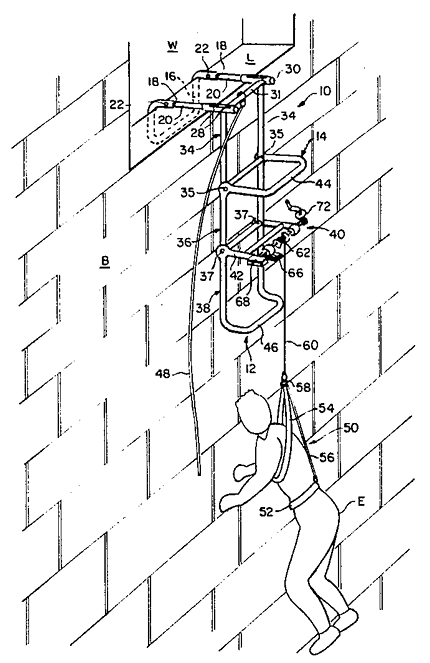Oil, wind, and solar have been competing to be the top energy source for centuries. Despite this, none of these options have what it takes to propel us forward into the technological future and pull us out of the power struggle that has been sweeping the globe. There is one form of energy, however, that we have yet to harness. A form of energy that is just as natural as wind and solar, and has the output potential to put an end to the power struggle in the world. That energy is gravity.
Inventor Peter Sing saw the problem with the main three power generation methods long ago. While many will talk about the brilliance of these methods, each has significant flaws that make it not even worth considering in comparison to Sing’s invention.
- Oil is powerful, but dirty. Burning oil has severe negative consequences on our planet, and we cannot rely on it forever without causing permanent harm to the Earth. In addition, oil is a limited resource, and we will run out some day.
- Wind is clean, but ineffective. It takes entire fields of windmills to generate a meaningful amount of energy when compared to oil and solar.
- Solar is also fairly clean, and yields more powerful results than wind. This makes it the current favorite in energy talks, however it is far from reliable enough to transition to. Solar power is only generated when the weather and time of day permits, and as such a series of prolonged bad weather could easily cripple an energy grid.
Gravity generation, on the other hand, has none of these downsides.
This technique utilizes the natural pull of gravity to generate power. In a simple example, imagine a weight on a pully, and when the pully turns, it generates electricity. The act of falling is indeed creating energy, and given the right circumstances, we can harness that energy.
 Sing’s first step into the gravity world was with his life saving invention called the Window Escape Descent Control Device. This device was intended to allow people on the upper floors of buildings a way to safe descend in an emergency. In short, the escapee would put on a body harness and lower themselves out of a tall window. Once they began to fall, the unwinding cord would turn a generating mechanism, creating electrical energy out of the gravitational effect. This electricity would then power a speed controller and brake on the descent device, slowing the person down until they safely reached the bottom. This device could also be used by people working at severe heights, such as window cleaners for tall buildings. The reason Sing’s invention was so revolutionary was because it used gravity to power a life saving device. This did not need to be plugged in anywhere, nor did it require a mounted solar panel. This standalone device could save somebody’s life.
Sing’s first step into the gravity world was with his life saving invention called the Window Escape Descent Control Device. This device was intended to allow people on the upper floors of buildings a way to safe descend in an emergency. In short, the escapee would put on a body harness and lower themselves out of a tall window. Once they began to fall, the unwinding cord would turn a generating mechanism, creating electrical energy out of the gravitational effect. This electricity would then power a speed controller and brake on the descent device, slowing the person down until they safely reached the bottom. This device could also be used by people working at severe heights, such as window cleaners for tall buildings. The reason Sing’s invention was so revolutionary was because it used gravity to power a life saving device. This did not need to be plugged in anywhere, nor did it require a mounted solar panel. This standalone device could save somebody’s life.
This was just the start of a much bigger concept that would save many more lives. Peter Sing continued to research the field of gravity generation, and found it incredibly promising. As Peter thought more on the idea, he developed new ideas on how to harness this energy and save the world from an energy crisis. Some individuals and organizations were even already experimenting with gravity generation, and they had proven the concept worked. By having a weight attached to a cable on a spool, the weight would unwind and turn the spool, thus activating an energy generator. Tests were done in various different ways, but each one presented a glaring flaw: the generation only worked one way.
Lowering weight to generate energy is a one way street, and the return trip is what put a stop to most other gravity generation experiments. In order to get the weight back to the top, more energy needed to be used that what was harnessed during the drop. The issue became finding a way to move the weight back up without losing energy, and it has proven difficult.
An attempt was made by a company called Energy Vault to solve this issue, as well as the biggest complication with solar energy. They devised a way to store excess solar energy in the form of gravity generators. In short, they would solve the problem with gravity generation by lifting the weights back up during the day using solar power, and this would in turn solve the issue with solar, as the blocks were effectively storing that solar energy to be released later in the form of gravity generation. This concept looks great in theory, but in practice would likely be a nightmare. The wear and tear on the blocks alone has raised many concerns, and the effectiveness of this concept is still in question. Plus, it doesn’t truly fix the issue with gravity generation. You’re still spending energy to lift the weights back up. But what if you didn’t actually have to lift them at all…
This is where Peter Sing’s incredible invention comes in. We don’t need to raise weights back up if there’s plenty of weights to begin with. Peter’s idea involves setting up generator workstations on the tops of tall mountains, which can be thousands of feet tall. Tall mountains have massive amounts of unused stone, and every bit of it is stored potential energy. The only thing that needs done to release that potential energy is to break away pieces of the rock and lower it down.

Just one example of tall mountains that could be harnessed for energy.
Peter’s idea would have workstations set up near the tops of tall mountains. A workstation would include one or more pulley systems hooked up to gravity generators, as well as a team and the equipment needed to chip or blast away stone. The team would start by safely chipping, cutting, or blasting a large chunk of stone from the mountain top. This piece of stone would then be attached to one of the pulleys and carefully lowered down the side of the mountain. There is no need to return the stone to the mountain top, because another piece can easily be prepared and sent down. This can be done again and again until the mountain top has been flattened out, which yields a secondary benefit in new livable land.
This process results in a significant amount of energy generated, with almost no energy spent on the process. The energy can be stored in large batteries and hauled off to the areas that need it, or wired directly into a nearby electrical grid. This is especially beneficial in areas with an excess of tall, untouched mountains, and yet incredibly low power availability. Examples include Japan, Taiwan, and more.
In addition, the harvested stone can be used for many different things. It can be used to level out the valleys in between the mountains, further creating new livable land for our ever growing population. The stone can also be hauled away to the coast, where it can be placed into the ocean to expand the coastline out further, reclaiming the land we lose every year to global warming and rising tides. Lastly, the stone can be turned into concrete and other materials or items, massively increasing the amount of building material available and thus allowing significant structures to be constructed.
With this one invention we can work toward solving the energy crisis, combat global warming, aid in the construction of civilization, and more. In places like Taiwan and Japan where there are many massive stone spires and mountains, the effects of this system would grow exponentially. If we don’t do something soon, our energy crisis may fall into a point where we cannot get out of it. Taking steps like this are not only beneficial to everybody, but required in order to maintain and preserver our beautiful planet.
